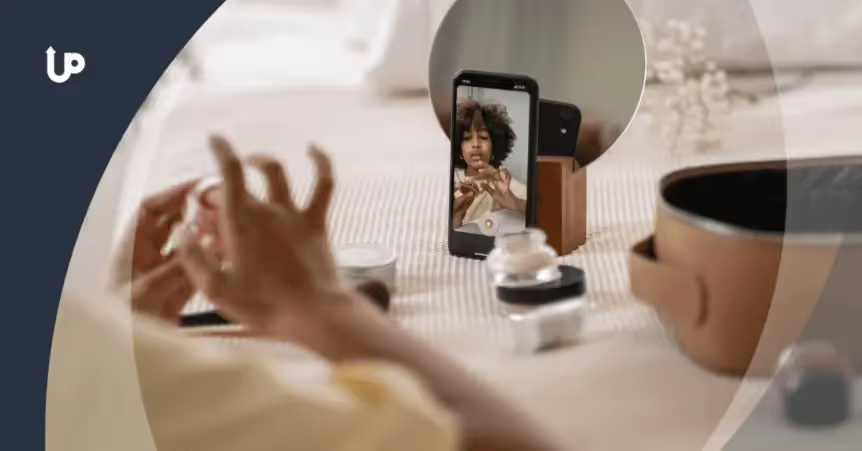Would you like to have people who genuinely feel connected to your brand actively promote it? In that case, you need to learn how to start an ambassador program.
You might think that brand ambassador programs are like influencer marketing campaigns, but they’re not — although an influencer can become your ambassador if they believe in your message and are willing to share it organically.
Brand ambassador programs are all about long-term partnerships that can expand your reach. Ambassadors give your brand a human touch. They increase positive word-of-mouth and so much more.
In this article, we’ll show you how these programs work, ways to define and attract your ideal ambassadors, and setting up your ambassador program successfully.
What Is a Brand Ambassador Program?
A brand ambassador program is a partnership you build with people who can help spread the word about your business.
Brand ambassadors include customers who consistently purchase your products, your employees, partners, and even micro- and macro-influencers. The key ingredient is that they love your brand and want to support your long-term growth.
How do brand ambassador programs work? Similar to customer loyalty programs, ambassador programs entail defining goals, finding and reaching out to prospects, and rewarding them with incentives.
Ambassador programs come in different types. Here are some examples:
1. Affiliate brand ambassador program
With this type of program, ambassadors talk about your products across their online channels, such as articles, social media posts, and emails. Each promotion has an affiliate link in which they can earn a commission when their audience makes a purchase.
The more they promote your products, the higher the chances of driving a sale to your shop and them making money. Everyone benefits from this program.
2. Requirement-driven brand ambassador program
As the term implies, this type of program has specific requirements that ambassadors should meet. This includes their profession, the type of content they put out, how often to post content, and an established online presence — e.g. having a certain number of followers who engage with their content.
Ensuring that you have the right people and processes will increase the success of your program.
One of the best ambassador program examples is Lululemon’s program. In order to be part of their program, a person should embody “the three pillars of sweatlife,” as they call it:

3. Informal brand ambassador program
This is a less structured type of ambassador program that new businesses can get started with. It’s effective for increasing word-of-mouth (WOM) marketing so that a brand reaches more audiences. Think of word-of-mouth as free advertising!
Although no formal structure exists, brands can incentivize their top sharers with their own products.
Running a contest or giveaway is also one strategy that can be used in this program to identify your best ambassadors. Basically, you set up a giveaway campaign using UpViral where you reward people who refer the most leads to your campaign!
4. Employee brand ambassador program
No one knows your brand better than your employees! For this type of program, employees also act as your spokespersons. They promote your brand on their channels where their family, friends, and acquaintances are connected.
For example, an employee of yours creates posts on TikTok that demonstrate how they enjoy your products! Product demos and tips are just some of the things they can make to help others get to know you better.
5. College brand ambassador program
College students are active on social media. In fact, a 2022 research study found that the use of social media in higher education has increased during the COVID-19 pandemic. Students don’t just use it for learning, but also for sharing their hobbies and interests.
Instead of regular customers, college students serve as your brand ambassadors.
Here’s how it works in a nutshell: They apply to your program, and once they get accepted, they receive a unique link to share with others. Fashion retailer SHEIN rewards their college ambassadors with various perks, including commissions, internship opportunities, and special giveaways. 🎁

Key Benefits of Brand Ambassador Programs
Perhaps the biggest advantages of these programs are boosting your brand awareness, store traffic, future sales, and brand loyalty without relying on paid ads. This is especially true if you don’t have the technical know-how to run social media and search engine (Google) ads.
Ambassadors do the content creation and promotional work for you. Furthermore, some ambassadors who’ve worked with other brands in the past have the and experience in using tools to track their engagement.
Since brand ambassadors feel a personal connection towards your business, they can connect with other people in a way that doesn’t sound salesy. Except for a few guidelines to follow (depending on your guidelines), ambassadors use their own words and creativity to paint your brand in a good light.
In other words, ambassadors humanize your brand. ♥️
Last but not least, keep in mind that brand ambassador programs are great for any industry! Retail brands, food companies, restaurants, travel and tour companies, and tech businesses all benefit from setting up these programs.
The key ingredient is an audience that’s willing to spread the word about you.
How to Start a Brand Ambassador Program
At this point, you probably understand how ambassador programs drive your growth. Once you’ve picked the type of program that fits your business, you’re ready to start your own.
Follow these steps on how to start a brand ambassador program.
1. Define your goals.
Goals are the foundation of your program’s success. With specific goals in mind, you’ll know what to expect from your brand ambassadors.
Do you want to generate more sales? Get honest feedback? Improve your brand’s reputation? Increase your number of leads? Boost user-generated content (UGC)?
You can have more than one goal. What’s important is that these goals are SMART — specific, measurable, achievable, realistic, and timely.
⚡Pro tip: If you use UpViral, take advantage of our Custom Actions feature to meet any goal. Through Custom Actions, you can incentivize people with bonus points by taking actions like subscribing to your YouTube channel, checking out your latest products, writing a review, and more!

2. Identify potential brand ambassadors.
Do you already have an idea of your ideal brand ambassador? Identifying them is like building your target audience profile. Ambassadors embody your brand’s values and image, therefore it’s important to establish criteria for your ambassadors.
Consider asking these questions:
- How long have they been using your product?
- How familiar are they with your product?
- Do they have many followers or lots of engagement?
- Which channels are they active on?
- Are they knowledgeable in online marketing?
- How old are they? Where do they live?
- Do they have a high level of professionalism?
- What kind of content did they publish in the past? (If they worked with other brands)
Even though you won’t be using a requirement-driven brand ambassador program, posting relevant guidelines will be extremely helpful for interested applicants.
3. Reach out to qualified ambassadors.
After publishing your brand ambassador program page on your website, don’t just wait for them to come to you.
Meanwhile, you can reach out via email with the link to your page (if you have an email list of existing fans and customers).
Alternatively, send a quick message on social media to those who’ve tagged you and posted about your products.
Tools like Hootsuite and Sprout Social are capable of tracking brand mentions on social media, helping you identify people who might be interested in becoming brand ambassadors.
⚡Need more ideas on how to create brand ambassadors? Here’s a cool trick using UpViral: Add “Check out our brand ambassador program” as a Custom Action in your next giveaway campaign in exchange for 10 (or higher) points. It’s a quick way to get more eyeballs on your program — and hopefully, new ambassadors for those who are interested!
4. Incentivize and engage with them.
Which rewards make brand ambassadors happy? Check out these options:
- Commissions from affiliate sales
- Free products (your own products)
- Product discounts
- Monthly giveaways (a chance to win more freebies)
- Tickets to an event
- Limited edition products
- A chance to get featured on your website
- Gift cards
- Scholarship opportunities (for college brand ambassadors)
Each month, try giving a shout-out to your top ambassadors. It’s motivating, plus it helps grow their social media channels, which will ultimately bring more people to your business.
5. Track your results.
Keep an eye out for the progress of your ambassador program. The same tools that you use for tracking brand mentions (see tip #3) can also be used to track hashtags related to your program.
Setting KPIs and metrics like content engagement, follower growth, downloads, website visits, new subscriptions, and sales — depending on your main goals — helps to evaluate the effectiveness of your ambassadors’ strategies.
Final Thoughts
Now, you’re ready to create an ambassador program. Having one for your brand can offer a massive payoff, and it doesn’t need to be complicated. There’s a lot of competition online these days, which makes brand ambassadors highly beneficial for reaching more customers.
UpViral can help you grow your ambassador program, whether you’re attracting new brand ambassadors or keeping them engaged with exciting rewards. See UpViral’s full features and get started today.





.png)